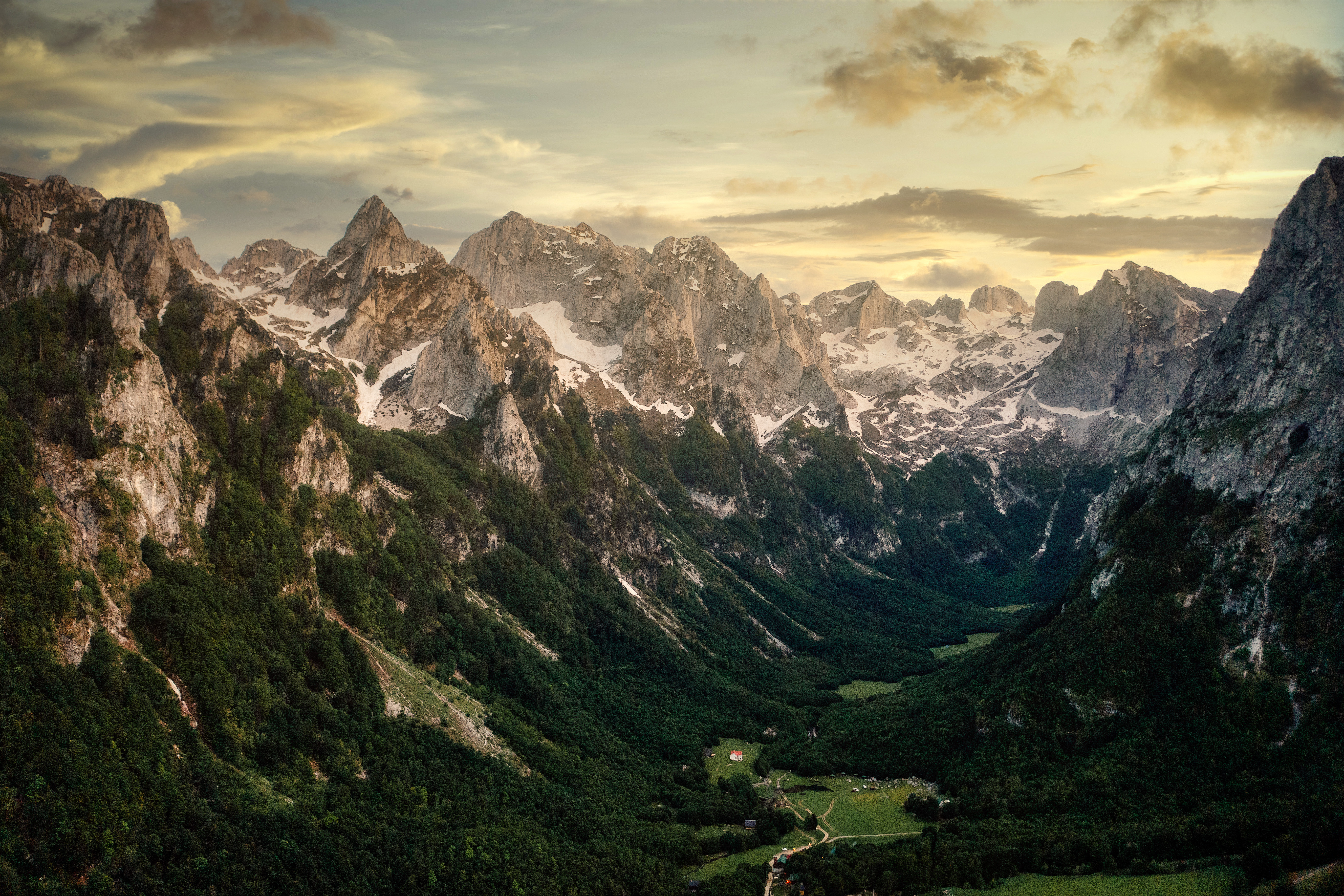
Vocabulary
- devoid /dih-VOID/
- serrated /SER-ey-tid/
- karst /kahrst/
- metaphor /MET-uh-fawr/
- impart /im-PAHRT/
[adjective] – to lack or be without something that is necessary or usual
The house is compact, barely lit, and devoid of any decorations.
[adjective] – having a row of sharp points along the edge
For cutting bread, you need a knife with a serrated edge.
[noun] – an area of land formed of rock such as limestone that is worn away by water to make caves and other formations
Sea caves and secret lagoons can be found in some of the rocky karsts.
[noun] – an expression, often found in literature, that describes a person or object by referring to something that is considered to have similar characteristics to that person or object
The rose is frequently used as a metaphor for love in poetry.
[verb] – to give a feeling or quality to something, or to make information known to someone
Are you able to impart any advice on this matter?
Article reading
The Albanian Alps are best known by their regional names, Bjeshkët e Nëmuna and Prokletije, both of which translate to “The Accursed Mountains.” They extend from northern Albania into southern Kosovo and north-eastern Montenegro. But it’s still a bit of a mystery as to how these serrated limestones gained their peculiar name. Local folklore claims that the devil created the jagged glacial karsts in a single day of mischief when he fled from hell. Some claim that the alps got their name from a woman who cursed the mountains when she couldn’t find any water while she and her children were hiking through them on a scorching day. Others assert that Slavic soldiers named the mountains because they found it difficult to march across them. The mysterious history of the peaks serves as a kind of metaphor for Albania as a whole.
Albania has long been referred to as “Europe’s enigma” by travel writers and book authors. But this frequently misunderstood country, which previously made such vain attempts to keep the world at bay, is now utilizing slow travel as a means of inviting people in and imparting knowledge about how a place can evolve and heal.
Discussion Questions
- What is the strangest place you know or have been to? Please explain the location.
- What unusual place in Japan would you recommend to a foreign friend? Why?
- Is it wise to use a mysterious and unusual place as a tourist spot?
- In what ways do you believe slow travel, as mentioned in the article, can play a role in changing perceptions and inviting people to explore and learn about a country’s history, evolution, and healing process?
- Considering Albania’s history of being referred to as “Europe’s enigma,” how can embracing its unique and lesser-known features through sustainable tourism contribute to breaking down misconceptions and fostering a deeper understanding of the country among travelers?
Summarization
Describe
- alpine
- solitude
- glacial
- enigma
- utilize